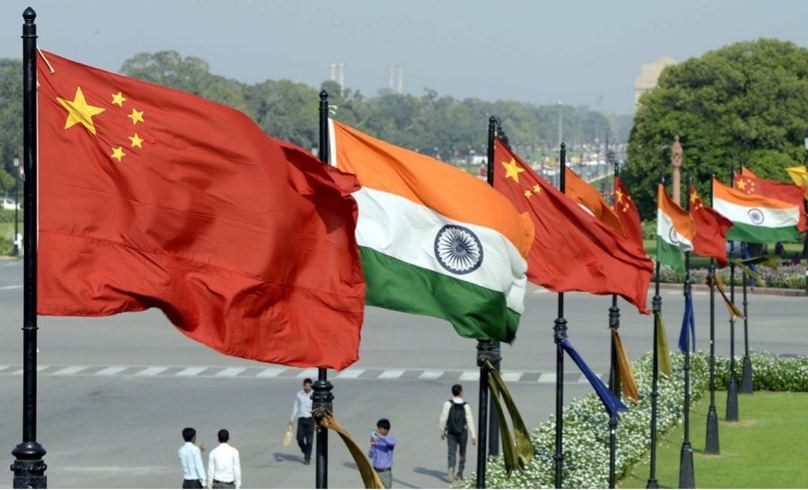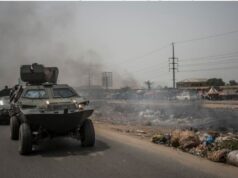Any Fresh Misadventure By PLA May See India Seizing The Initiative For Liberation Of Entire Chinese Occupied Ladakh

Despite China having military, diplomatic and political channels open with India to discuss disengagement in remaining regions of LAC in Ladakh, China it seems has fallen prey to its own duplicity.
China had earlier perfected a technique of just talking and talking and dragging on negotiations but at the same time building up its military capabilities. However this time India too has quietly not only strengthened its defensive capabilities but also built up its strike capabilities in Ladakh. Meanwhile it let the Chinese drag on the negotiations for disengagement.
So when summer came, the PLA tried to showcase its large scale ground and air military exercise in parts of Occupied Ladakh and Occupied Tibet, to frighten the Indian Army. However it soon realized, that the Indian Forces were instead nonchalantly watching and monitoring all the Chinese drills. Now the Chinese have also realized that not only India has deployed matching defensive forces but also assembled a sizeable strike force. This has panicked the PLA no end, as a Vietnam like scenario is already staring at them, when in the 70’s they had gone to teach some lessons to the Vietnamese forces.
The China-India LAC issue, a year after the Galwan Valley clash, is still festering even after the ninth round of senior commander-level talks. Though China and India had announced an agreement for disengagement on the north and south bank of Pangong Lake in February itself.
On June 15, 2020, the LAC spat between China and India in Chinese Occupied Ladakh turned into the first deadly military clash between the two since 1975, resulting in 40 Chinese deaths and over 40 wounded and 20 soldiers killed from the India Army.
India thereafter started strengthening its military build-up amid “the fear of new conflicts.” On Monday, Russia media outlet Independent said that the warmer weather in the Himalayas may lead to a greater danger of clashes between China and India. The PLA may be feeling a bit emboldened with fresh divisions inducted in the area, after a very harsh Winter. It is worth noting that two PLA divisions deployed after Galwan Clashes had to stay deployed right through the Winter and were completely exhausted.
Indian’s army chief general Manoj Mukund Naravane said in May that Indian troops are in a high state of readiness and alert, as India still has 50,000-60,000 troops in Ladakh. Disengagement has taken place in many areas but over deployments in Ladakh haven’t thinned after the disengagement agreement. As per media report now the Indian Army has a built in offensive capabilities too with the 14 Corps.
So Shri Sun Weidong, the Chinese Ambassador to New Delhi, has already started saying in his latest public speech that the boundary dispute is a question left over from history that should be placed properly in the bilateral relationship. As per him China insists on handling the disputes through negotiations while upholding its determination to safeguard its sovereignty, security and development interests.
As neighbors with populations of over 1 billion, the two countries share more common interests than divergences, Sun said.
Qian Feng, director of the research department at the National Strategy Institute of Tsinghua University, said that most Chinese and Indian soldiers have disengaged. Albeit consensus failed to achieve in the remaining areas (such as the Hot Springs and Depsang Plains), the standoff scale is much smaller with a less significant impact.
In the eleventh round of senior commander-level talks that took place in Ladakh on April 9, senior representatives from the two countries met for 13 hours on the issue of disengagement at the remaining sites.
The two countries have been maintaining communication through military and diplomatic channels, said Qian, noting that due to the Wuhan Virus epidemic, face-to-face talks have been suspended, but the hotline and telephone communications are still available.
The current China-India LAC situation apparently looks much better than the same period last year. However it is obvious that if the remaining stalemate persists, it will be detrimental to military-to-military relations and the stability of the western section of China-India LAC.
However now fully aware that the stalling tactics of China has boomeranged and India has been building up its strike capabilities, Chinese research fellows have started talking of a new conflict on the LAC. “India has a political tradition of always looking for border issues to distract attention when there is a crisis at home,” Hu said. “China needs to be very vigilant about this.” ……this shows the Communist duplicity.
China’s infrastructure along the border is well built and although there are not many troops on the front line, they can always be reinforced from the second line.
Indian External Affairs Minister Subrahmanyam Jaishankar has clearly said in May that India-China relations are at a crossroads, and they cannot think of cooperating with China in other areas as long as border tensions continue. Chinese had thought that in spite of clashes, there will be business as usual, they have been surprised no end.
Two days before the disengagement of Chinese and Indian troops, US President Joe Biden and Modi agreed on February 8 to work closely to strengthen an Indo-Pacific framework amid China’s trying to block the freedom of Navigation in Seas off Southern Coast of China.
Russian President Vladimir Putin said over the weekend that the Chinese and Indian leaders are responsible people who can settle border disputes, and it is important that no extra-regional powers interfere in the process.
So the Chinese should not make any mistakes. In case they cross the line once again then the initiative may be seized by the Indian Army and handed over to SFF for liberation of their motherland.
Hence the best bet for the Chinese is to first negotiate the Tibet Indian border, demarcated it on ground and thereafter vacate entire occupied Ladakh.




